The only way I see possible to test this is by actually removing controls in order to see if it finds the proper control.
Testing it this way, it looks as if it is evaluated only once whether using a MultiBinding or not.
<Window x:Class="RelativeTest.MainWindow"
xmlns="http://schemas.microsoft.com/winfx/2006/xaml/presentation"
xmlns:x="http://schemas.microsoft.com/winfx/2006/xaml"
xmlns:d="http://schemas.microsoft.com/expression/blend/2008"
xmlns:mc="http://schemas.openxmlformats.org/markup-compatibility/2006"
mc:Ignorable="d"
Title="MainWindow" Height="350" Width="525">
<StackPanel x:Name="Stack">
<TextBlock x:Name="TB1" Text="Foo" />
<TextBlock x:Name="TB2" Text="Bar" />
<Border BorderThickness="1" BorderBrush="Black" />
<TextBlock Text="{Binding RelativeSource={RelativeSource Mode=FindAncestor, AncestorType=StackPanel}, Path=Children[0].Text}"
Foreground="Red" />
<TextBlock Foreground="Blue">
<TextBlock.Text>
<MultiBinding StringFormat="{}{2}">
<Binding ElementName="TB1" Path="Text" />
<Binding ElementName="TB2" Path="Text" />
<Binding RelativeSource="{RelativeSource Mode=FindAncestor, AncestorType=StackPanel}" Path="Children[0].Text" />
</MultiBinding>
</TextBlock.Text>
</TextBlock>
<Button Click="ButtonBase_OnClick" Content="Remove 1st Child" />
</StackPanel>
</Window>
public partial class MainWindow : Window
{
public MainWindow()
{
InitializeComponent();
}
void ButtonBase_OnClick(object sender, RoutedEventArgs e)
{
Stack.Children.Remove(Stack.Children[0]);
TB1.Text = "You'll see me if I am looked up once.";
TB2.Text = "You'll see me twice if I am re-evaulated each time";
}
}
When running it initially you will see:

When clicking the button, it will remove the first child and change the TextBlocks to display newer text to indicate which one it now binds to.


